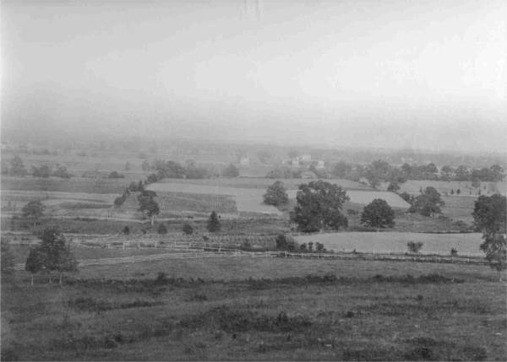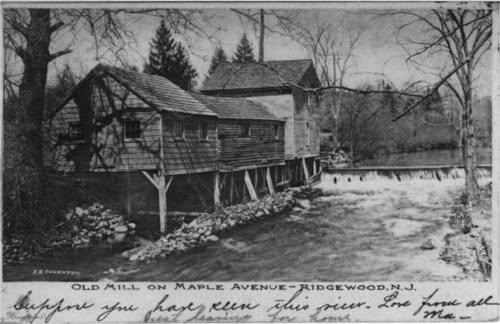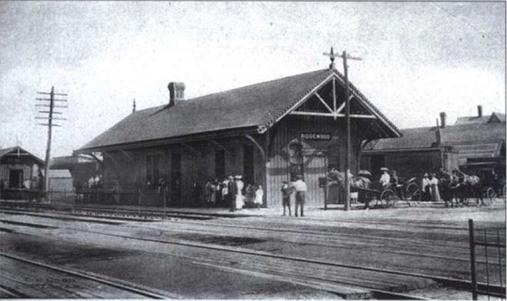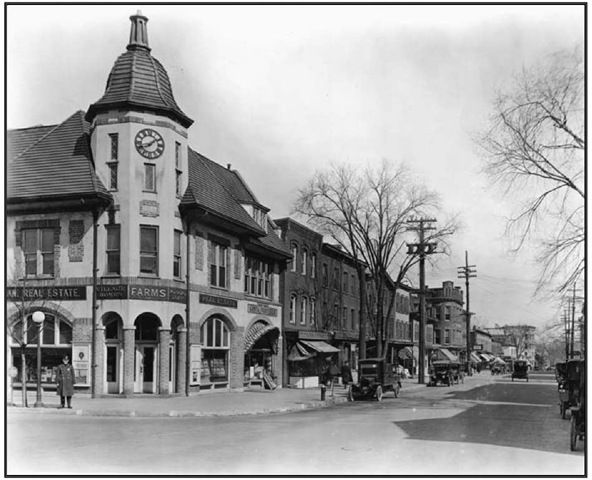This cache is meant to be an easy find for those living in and those visiting the Village of Ridgewood. If you're interested in the significance of the Ridgewood Train Station, where this cache is located, please continue reading..."
From Brief History of Ridgewood from the Ridgewood Public Library:
In 1698, when Johannes Van Emburgh and David Provoast purchased 250 acres of land, Ridgewood was a wilderness of trees and streams. The area was called Hochaos (now Ho-Ho-Kus) after the Native American name of the brook that runs through the Village. By 1725 the area was known as Paramus and there were enough families in the area to establish a congregation of the Reformed Church. The first church was a strategic military point during the American Revolution with troops encamped here throughout the war. George Washington visited and wrote letters here, and the Patriots and the British skirmished in the churchyard.

The Old Paramus Reformed Church
The area around the church and across the Saddle River (at the intersection of today's East Saddle River Road and East Glen Avenue) was the center of activity in the area for 150 years. The Old Paramus Reformed Church (built in 1800) and four other historic building still stand there today.

Agricultural Ridgewood
Ridgewood was settled primary by Jersey Dutch people who traced their ancestors to the Netherlands as well as immigrants from other European countries, who assimilated into the Dutch American culture. Their way of life was agricultural, growing crops and raising livestock to support their families and to trade in markets as far away as New York. Ridgewood had a blacksmith and there were small grist and saw mills along the streams.

Saw Mill on Maple Avenue
The first harbinger of change was the 1848 opening of the Paterson and Ramapo railroad through Ridgewood. It provided easy access to New York City making this area more attractive to wealthy businessmen and their families. In 1853, the Van Emburgh estate (greatly enlarged from that first purchase of 250 acres) came on the market and Samuel Dayton of New York City bought a large plot of the land. He built a farming estate for himself and sold land to his sons-in-law, Benjamin Franklin Robinson and Samuel Graydon, who also built large estates. Others followed quickly, taking advantage of the clean air, the healthy environment, and the beautiful surroundings.
At first the closest station was at Ho-Ho-Kus, but with the influx of commuters and the desire of owners of the Wortendyke Mill for a nearby depot, a stop was established at Ridgewood Avenue and named Godwinville Station in 1853. At the urging of Cornelia Dayton, daughter-in-law of Samuel Dayton, residents lobbied to change the name to Ridgewood. Their first success was with the Post Office Department, which established the Ridgewood Post Office in 1865. The Erie finally followed suit in 1866, changing the name of the Godwinville Station to Ridgewood and setting Ridgewood well on its way to becoming the suburb it is today.

Ridgewood Train Station
With the coming of the railroad, the center of town moved from the Paramus Church area to the intersection of Ridgewood Avenue and the railroad tracks. Commerical development clustered east of the station. Ridgewood grew steadily, slowly supplanting farms with houses and stores.

The Village of Ridgewood at Broad Street and Ridgewood Avenue